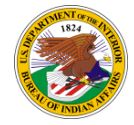Where Have they Gone
February 19, 2019
As of 2015, there were five million Native Americans living in 21 states across the United States (“Native Americans By the Numbers.”). But no one knows how many of those are missing Native American women. According to the National Crime Information Centre database, there are 5,646 Native American women are missing (Gray). However, this number may be woefully inaccurate.

Annita Lucceshi, a Ph.D. student in Southern Alberta, has been putting together a database of missing Native American women across the U.S. and Canada (Gray). This is a job to be done by the government but hasn’t. When Annita goes to police stations to inquires about missing person cases of Native Americans she gets no response or that police station did not make a record of that case (Gray). Taylor Sheridan is the writer and director of Wind River, which is a movie about a tracker and an FBI agent who open an investigation to find the person who murdered and raped an American Indian girl (Klassen). Sheridan sent two researchers to find out how many Native American women are missing and after three months they came back empty-handed (Klassen). Although there are no statistics as to the number of missing women there is plenty of disheartening statistics of how bad the situation really is. The Department of Justice turns away ⅔ of sexual assaults that happen on reservations and violence on reservations is 2.5 times the national average. This begs the questions: why is there a lack of prosecution and investigations involving missing Native American women?

One of the main reasons is because of legal obstacles. First, the Native American people must report incidents to their tribal police and the tribal police must report it to the FBI (Federal Bureau of Investigation) or the BIA (Bureau of Indian Affairs) (Wakeling). Some crimes are not reported to the tribal police out of “distrust of police, the shame or humiliation
associated with certain kinds of crime, and fear of retaliation” (Wakeling). These are common fears in reservations according to National Institute of Justice. In addition, it is terribly difficult the tribal police because they are sparse in number and are often undertrained (Gray). “There are a lot less tribal police, for example the Navajo people, the reservation is huge – if you think about it as the size of Maine with 129 cops – roughly – and then if you think about Maine, they have thousands of cops” This means that these tribal police departments are overworked and therefore can get sloppy with their work.

This leads to the second reason that the database for missing Native American people is incomplete. Since these police departments are so small they cannot dedicate a specific person for data collection and analysis because it is so expensive (Wakeling). Furthermore, many of these police stations lack systems to input that data and accurate analysis (Wakeling). Without proper documentation, the tribal police have little to nothing to offer to the FBI or BIA. This documentation could be valuable information for the FBI and the BIA in future cases. Lastly, there are 567 sovereign tribal nations which are self-governing jurisdictions. But according to the National Congress of American Indians, “there is a lack of federal agency coordination and [there are] regulations and laws that prevent tribal governments from equitable access to federal programmes on par with state and local governments” (Gray). This means that the U.S. government and the governments of the Native Americans cannot work together and that there are laws preventing this. This is such a huge obstacle, especially in missing person’s case.

So what is being done to rectify a problem that has been swirling for decades? North Dakota Senator Heidi Heitkamp introduced Savanna’s Act in the Senate in 2017 (Diaz). The act is named after Savanna LaFontaine-Greywind who was abducted and killed while eight months pregnant in Fargo, North Dakota, in August 2017 (Diaz). The bill calls for the Department of Justice, who prosecutes Native American crimes, to allow users to input data about the tribal person’s tribal affiliation and other information, new justice protocols, and training for tribal police and law enforcement on these protocols (Heitkamp, and Heidi). The bill has made headlines again when US Senator Jon Tester and US Senator Steve Daines introduced it in the Senate hearing committee yet again (Diaz). Hopefully, this bill will falsify the quote, “While missing person statistics are compiled for every other demographic, none exist for Native American women.”. (Klassen)

Works Cited
Diaz, Andrea. “At Least 24 Native Americans — Most of Them Women — Went Missing in
Montana Last Year. Two Senators Are Trying to Do Something about It.” CNN, Cable
News Network, 8 Jan. 2019, www.cnn.com/2019/01/07/us/native-american-women-missing-montana-trnd/index.html.
Heitkamp, and Heidi. “S.1942 – 115th Congress (2017-2018): Savanna’s Act.” Congress.gov, 10
Dec. 2018,
www.congress.gov/bill/115th-congress/senate-bill/1942?q=%7B%22search%22%3A%22Savanna%22%7D&s=2&r=1.
Gray, Lucy Anna. “The Conversation of Murdered and Missing Native Women Is Not One
North America Wants to Have – but It Must.” The Independent, Independent Digital
News and Media, 15 Oct. 2018,
www.independent.co.uk/news/long_reads/native-american-women-missing-murder-mmiw-inquiry-canada-us-violence-indigenous-a8487976.html.
Klassen, Anna. “’Wind River’ Exposes This Hidden Injustice Against Native American
Women.” Bustle, Bustle, 17 Dec. 2018,
www.bustle.com/p/the-true-story-behind-wind-river-is-this-hidden-injustice-against-native-american-women-75304.
“Native Americans By the Numbers.” Infoplease, Infoplease,
www.infoplease.com/american-indians-numbers-1.
Wakeling , Stewart, et al. “Policing on American Indian Reservations.” National Institute of
Justice Research Report , National Institute of Justice , July 2001,
www.ncjrs.gov/pdffiles1/nij/188095.pdf.
Williams , Timothy. “Higher Crime, Fewer Charges on Indian Land.” New York Times , The
New York Times Company , 20 Mar. 2012,
www.nytimes.com/2012/02/21/us/on-indian-reservations-higher-crime-and-fewer
-prosecutions.html.